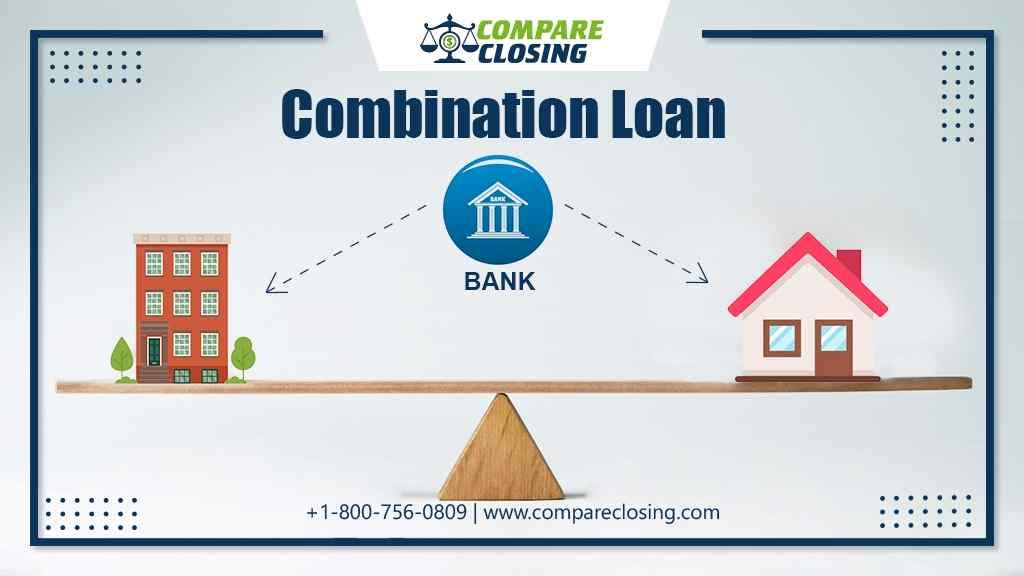
About Combination Loans
While buying a new home borrower needs to make a minimum down payment of 20% to avoid private mortgage insurance.
If you are making a down payment below that you would have to pay PMI which adds up to the cost of borrowing.
There is one option that a borrower may be able to lower the cost of borrowing if the proper comparison is made. This option is called a Combination loan.
In this post, we will understand and know more about combination loans.
What is a Combination Loan?
A combination loan is the loan option that is provided by some lenders. In a combination loan, the borrower usually gets two different loans from the same lender.
Most people take combination loans to avoid private mortgage insurance when they are buying a new home with less than a 20% down payment.
The primary purpose of a combination loan is to lower the overall payment for the borrower and potentially lower their interest rate.
A combination loan can help the borrower to save on the private mortgage insurance by splitting the mortgage into two different loans.
If the borrower is purchasing a home that is more than the conforming limits set by FHA, the borrower has to get a jumbo mortgage which usually has a higher interest rate.
With the help of a combination loan, the borrower can get two different loans, the first one with the confirming limit, and the other as a second mortgage.
What are the Types of Combination Loans?
The loans that make up this combination differ depending on whether you are building or purchasing a home.
Constructing a New Home:
If you are building a house, you would first need to get a construction loan which will pay your builder while they supervise the development of your new home.
This type of loan mostly has a variable interest rate. This means that the interest rate will fluctuate according to the market index.
If the market index is higher you will be charged a higher interest rate, and if the market index is lower, the interest would be lowered too.
Once the construction of your new home is completed, the lender will convert this construction loan into a conventional mortgage with a fixed interest rate.
This means that the lender will provide you with a conventional mortgage to pay off the construction loan, and will amortize your mortgage on a fixed interest rate for the tenure that you have decided to avail, for example; 10, 15, 20, or, 30 years.
Once your mortgage is amortized the borrower will have to make the payment according to the new terms of the mortgage till the time it is paid off.
Buying a Ready To Move Home:
If you are planning to purchase a ready-to-move home, the lender will provide you with a most common combination loan which is called an 80–10–10 loan.
In this type of combination mortgage, 80% of the purchase price is your primary mortgage, the next 10% is your second mortgage, and the remaining 10% is your down payment.
The lender will give a 30 or a 15 year fixed mortgage for the 80% part of our loan. Then the lender will provide a second mortgage for the next 10% of the purchase price which has a higher interest rate compared to the first mortgage.
And the remaining 10% of the purchase price would be the down payment towards the property purchase.
The borrower would be making two different payments to the lender. The first one is for the 80% loan and the second for the 10% loan.
For example, if you are buying a home that has a sales price of $800,000 with a combination loan, the lender will give a first mortgage which would be for $640,000.
The second mortgage would be for $80,000, and the down payment that you have to make would be $80,000.
Conclusion
The combination of mortgage loans can make great sense if you are constructing a new home.
However, while buying a new ready-to-move home will be less than a twenty percent down payment, you might want to check if it is worth getting a combo mortgage loan as the interest rate on the second mortgage is usually higher.
You might have to calculate whether you are saving more money with private mortgage insurance or a combination mortgage.
You can also check out other loan options where you don’t have to pay PMI like USDA or VA, however, these loans have a different process of qualification, and the borrower should be eligible to get these loans.
https://www.compareclosing.com/blog/what-are-combination-loans-and-types/
Comments
Post a Comment